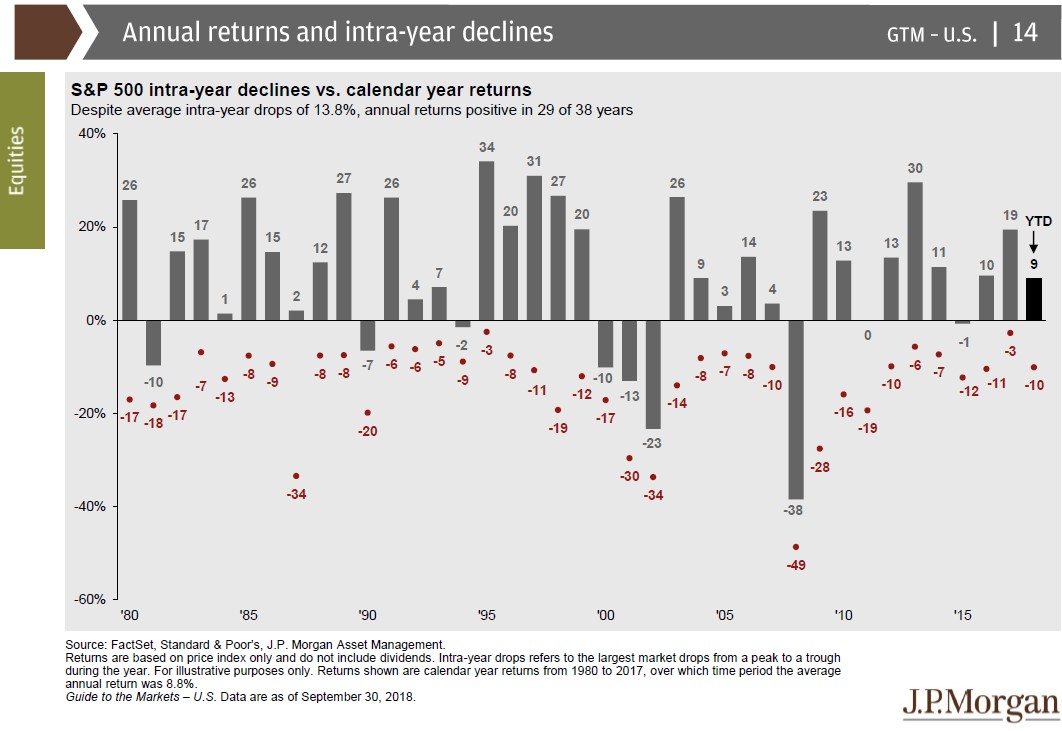Where Does Your Advisor Get Their Clients?
Where Does Your Advisor Get Their Clients?
Understanding how an RIA gets clients can be an important factor for prospective clients or for advisors looking to join an RIA.
Every registered investment adviser (RIA) is looking for the same thing, more clients. Understanding how an RIA gets their clients can be an important consideration for prospective clients of an RIA and for individual financial advisors looking to join an RIA.
RIAs use various tools to develop clients and grow their business. The particular business development model used by an RIA can give you valuable insight into, among other things, how the company may work with you and what is important to them. So, let’s take a look at the different models and how they can affect you as an end user …
Organic Referrals
One of the most common ways RIAs get new clients is through what I will refer to as “organic” referrals from existing clients. An organic referral typically involves an existing client of an RIA who provides the RIA with a potential client introduction without receiving anything of value in return. Most RIAs use organic referrals as at least one component of their business development plan, and indeed for some it is their only avenue for growth. What does that tell a prospective client or an advisor looking to join the RIA? Usually, if an RIA is receiving a lot of organic referrals from existing clients, it is reasonable to assume that they are doing a good job for their clients. Otherwise, clients wouldn’t be referring friends, family members, and colleagues and risking those relationships. So, it is worthwhile to ask an RIA about the percentage of their client growth that comes through organic referrals from existing clients.
Similar to an organic referral from an existing client, an RIA might also receive referrals from a professional service provider, such as an estate planning attorney or certified public accountant, with whom the RIA has an existing relationship. In some such cases, the attorney or CPA simply does so to develop a relationship with the RIA with the hope that the flow of referrals will go both ways.
Paid Referrals/Solicitations
On the other side of the spectrum, an RIA might obtain new clients through paid leads. For example, an RIA also might get new clients from affiliated broker-dealers who serve as custodians for the RIA or perform other services. Most of the discount brokerage companies (e.g. Fidelity, Schwab, TD Ameritrade) have referral programs where they send certain clients to pre-screened RIAs for wealth management services. In return, those brokerage companies may receive a portion of the fee paid by the client to the RIA, typically 0.25%. In some situations, this referral fee might continue for as long as the client stays with the RIA. While there may be several other factors that lead a broker to refer a client to a certain RIA, the possibility of a referral fee is certainly one that should be considered when a client is deciding whether to hire a particular RIA. Therefore, it is important to ask the broker who makes the referral if they have sales targets they need to meet and/or if they personally benefit from the referral. Don’t just assume they are doing it out of the kindness of their heart. Another example is a situation similar to that which I described earlier where an attorney or CPA refers his or her own clients to an RIA, but the RIA pays the attorney or CPA either a flat fee or a percentage of the fees billed to the client.
RIAs can also use third-party solicitors to find new clients. In this scenario, the RIA pays a cash fee to someone who is not an employee of the RIA to find clients and make introductions. Oftentimes this fee is a portion of the advisory fee charged to the client for a certain period of time. There is nothing inherently wrong with such arrangements, or other referral situations in which an RIA pays for client leads. However, such arrangements should be disclosed to the client so that they can evaluate the potential conflict of interest and make an informed decision. Such referral arrangements should be disclosed in two ways. First, the person making the referral (and being paid for it) should provide the prospective client with a document that discloses certain information about his or her arrangement with the RIA, including the fee to be paid. Second, the RIA should disclose such arrangements in the Form ADV that they file with the SEC, which can usually be found at www.adviserinfo.sec.gov.
A paid solicitation is different from an unpaid referral, and a prospective client might have a very different perception of client growth based on referrals from people who expect nothing in return versus growth based on paid solicitations. This is just one more piece of information that a prospective client should have in hand when deciding whether to hire an RIA.
Mergers & Acquisitions
Lastly, advisors can grow through acquiring, or merging with, existing advisory firms. There are several firms out there that will buy out an existing firm entirely. Such a model can be efficient and effective because, as you create economies of scale and grow larger and larger, it gets easier to bring on more RIAs to take advantage of that scale. There also are a handful of companies out there that have become the predominant players in what is considered the “roll-up” market for advisors. There are a number of reasons that a prospective client should know if the RIA they are considering is one of these companies. For example, the rate of an RIA’s growth might impact their ability to provide services to their clients at the same level if the RIA is not built to handle that scale.
So why is all of this important? The bottom line is that, for many people looking for someone to help them with their financial planning and investments, size matters. At the same time, a lot of the marketing and promotional aspects of the investment advisory business focus on size, specifically the amount of assets under management, or AUM, of an RIA. For example, rate of growth is one of the primary ways that advisors are ranked by various publications. Therefore, while size can be important for many reasons, it is important to look deeper into the metrics one uses to evaluate an RIA’s size.
It is important to understand where an RIA’s growth is coming from in order to evaluate if they are truly living up to the expectations of their clients. One of the most impressive growth indicators for a company is if they are receiving a substantial number of referrals from existing clients. However, that growth might be viewed differently if they are growing because of paid solicitation programs. Similarly, if they are expanding because they are acquiring other advisors, it could lend a different interpretation of rapid growth in AUM.
None of these models are necessarily good or bad for prospective clients, but it is something to keep in mind. It is also important that your RIA is upfront with you about these and other issues. At my firm, Spotlight Asset Group, we have found clients through both referrals from existing clients and by bringing on existing advisory firms or individual advisors. While we don’t currently participate in any paid solicitation programs, it is something that we would consider under the right circumstances. No matter what approach we take, we always ask ourselves how it best serves both our existing clients and prospective clients.

Stephen Greco, CEO
Join the Spotlight Asset Group Newsletter
Where Does Your Advisor Get Their Clients?
Understanding how an RIA gets clients can be an important factor for prospective clients or for advisors looking to join an RIA.
Every registered investment adviser (RIA) is looking for the same thing, more clients. Understanding how an RIA gets their clients can be an important consideration for prospective clients of an RIA and for individual financial advisors looking to join an RIA.
RIAs use various tools to develop clients and grow their business. The particular business development model used by an RIA can give you valuable insight into, among other things, how the company may work with you and what is important to them. So, let’s take a look at the different models and how they can affect you as an end user …
Organic Referrals
One of the most common ways RIAs get new clients is through what I will refer to as “organic” referrals from existing clients. An organic referral typically involves an existing client of an RIA who provides the RIA with a potential client introduction without receiving anything of value in return. Most RIAs use organic referrals as at least one component of their business development plan, and indeed for some it is their only avenue for growth. What does that tell a prospective client or an advisor looking to join the RIA? Usually, if an RIA is receiving a lot of organic referrals from existing clients, it is reasonable to assume that they are doing a good job for their clients. Otherwise, clients wouldn’t be referring friends, family members, and colleagues and risking those relationships. So, it is worthwhile to ask an RIA about the percentage of their client growth that comes through organic referrals from existing clients.
Similar to an organic referral from an existing client, an RIA might also receive referrals from a professional service provider, such as an estate planning attorney or certified public accountant, with whom the RIA has an existing relationship. In some such cases, the attorney or CPA simply does so to develop a relationship with the RIA with the hope that the flow of referrals will go both ways.
Paid Referrals/Solicitations
On the other side of the spectrum, an RIA might obtain new clients through paid leads. For example, an RIA also might get new clients from affiliated broker-dealers who serve as custodians for the RIA or perform other services. Most of the discount brokerage companies (e.g. Fidelity, Schwab, TD Ameritrade) have referral programs where they send certain clients to pre-screened RIAs for wealth management services. In return, those brokerage companies may receive a portion of the fee paid by the client to the RIA, typically 0.25%. In some situations, this referral fee might continue for as long as the client stays with the RIA. While there may be several other factors that lead a broker to refer a client to a certain RIA, the possibility of a referral fee is certainly one that should be considered when a client is deciding whether to hire a particular RIA. Therefore, it is important to ask the broker who makes the referral if they have sales targets they need to meet and/or if they personally benefit from the referral. Don’t just assume they are doing it out of the kindness of their heart. Another example is a situation similar to that which I described earlier where an attorney or CPA refers his or her own clients to an RIA, but the RIA pays the attorney or CPA either a flat fee or a percentage of the fees billed to the client.
RIAs can also use third-party solicitors to find new clients. In this scenario, the RIA pays a cash fee to someone who is not an employee of the RIA to find clients and make introductions. Oftentimes this fee is a portion of the advisory fee charged to the client for a certain period of time. There is nothing inherently wrong with such arrangements, or other referral situations in which an RIA pays for client leads. However, such arrangements should be disclosed to the client so that they can evaluate the potential conflict of interest and make an informed decision. Such referral arrangements should be disclosed in two ways. First, the person making the referral (and being paid for it) should provide the prospective client with a document that discloses certain information about his or her arrangement with the RIA, including the fee to be paid. Second, the RIA should disclose such arrangements in the Form ADV that they file with the SEC, which can usually be found at www.adviserinfo.sec.gov.
A paid solicitation is different from an unpaid referral, and a prospective client might have a very different perception of client growth based on referrals from people who expect nothing in return versus growth based on paid solicitations. This is just one more piece of information that a prospective client should have in hand when deciding whether to hire an RIA.
Mergers & Acquisitions
Lastly, advisors can grow through acquiring, or merging with, existing advisory firms. There are several firms out there that will buy out an existing firm entirely. Such a model can be efficient and effective because, as you create economies of scale and grow larger and larger, it gets easier to bring on more RIAs to take advantage of that scale. There also are a handful of companies out there that have become the predominant players in what is considered the “roll-up” market for advisors. There are a number of reasons that a prospective client should know if the RIA they are considering is one of these companies. For example, the rate of an RIA’s growth might impact their ability to provide services to their clients at the same level if the RIA is not built to handle that scale.
So why is all of this important? The bottom line is that, for many people looking for someone to help them with their financial planning and investments, size matters. At the same time, a lot of the marketing and promotional aspects of the investment advisory business focus on size, specifically the amount of assets under management, or AUM, of an RIA. For example, rate of growth is one of the primary ways that advisors are ranked by various publications. Therefore, while size can be important for many reasons, it is important to look deeper into the metrics one uses to evaluate an RIA’s size.
It is important to understand where an RIA’s growth is coming from in order to evaluate if they are truly living up to the expectations of their clients. One of the most impressive growth indicators for a company is if they are receiving a substantial number of referrals from existing clients. However, that growth might be viewed differently if they are growing because of paid solicitation programs. Similarly, if they are expanding because they are acquiring other advisors, it could lend a different interpretation of rapid growth in AUM.
None of these models are necessarily good or bad for prospective clients, but it is something to keep in mind. It is also important that your RIA is upfront with you about these and other issues. At my firm, Spotlight Asset Group, we have found clients through both referrals from existing clients and by bringing on existing advisory firms or individual advisors. While we don’t currently participate in any paid solicitation programs, it is something that we would consider under the right circumstances. No matter what approach we take, we always ask ourselves how it best serves both our existing clients and prospective clients.

Stephen Greco, CEO



